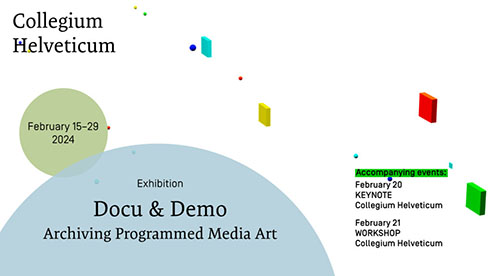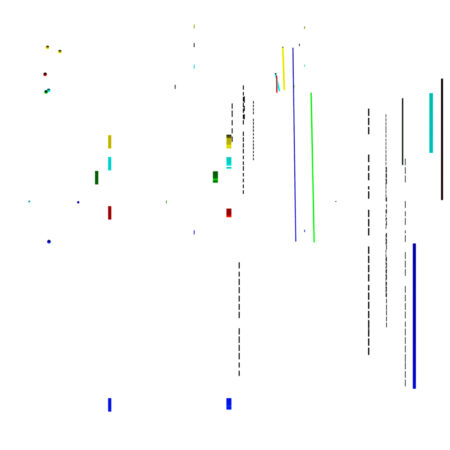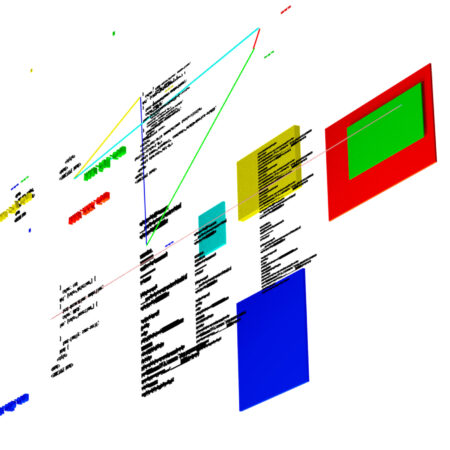
February 15, 2024, 11:00–16:30 – February 29, 2024
Docu & Demo
Exhibition on Archiving Programmed Media Art
Organized by: Inge Hinterwaldner
Exhibits by: Browser Art and Coded Secrets
Venue: Collegium Helveticum, exhibition space Gallery
⇒ This is a public event. Participation is free of charge and registration is not required.
The show addresses the question of how programmed media art can and should be documented, recorded, and discussed in the future. There are many different levels to consider. Social, aesthetic, reception-orientated, and technical components all come into play. If screenshots, video recordings, and short texts are not sufficient as forms of documentation (something that has not been scrutinized enough until to date) what should fill the archives instead or in addition? What are condensed forms of knowledge transmission? What about model building in the humanities?
Inge Hinterwaldner and her interdisciplinary research teams Browser Art and Coded Secrets (COSE) are exhibiting the outcomes of three different experiments. They resulted in three types of “models” that serve heuristic, epistemic, and communicative purposes, in this case primarily in art history. With these epistemic formats they pursue methodologically new territory for documenting and presenting complex programmed and interactive artworks. Each of the exhibits is the fruit of in-depth analytical inquiries into one single artistic piece. They mark steps in the evolution of their humanistic methods repertoire. In addition to these models, the corresponding three online artworks are presented. This juxtaposition should make it possible to critically discuss what transformation the work has undergone through humanities’ analysis. This way the visitor can see and decide for herself whether or how the analytical artifacts help in understanding and grasping some important features.
List of works
Artworks
.com and .co.kr (2000–2005)
JODI
The artist duo created eleven artistic browsers for the series %WRONG Browsers. Two of them are shown. They persiflage the idea of nationalized domain names in the internet as that seemed absurd for early netizens. The browsers are fully functional, even pro-actively on autopilot if the users forget to interact. They show and perform the internet in alternative ways.
Visitor’s Guide to London (1995)
Heath Bunting
Originally created in Hypercard format, this massively networked retro-style internet piece offers a virtual stroll through the British capital. It is a very personal tour that combines a street view photographs with words, graffiti signs and a map. It thus invites to explore the different strata of the city.
Analytical models
Navigation (2023)
Browser Art
It is a multi-authored book, edited by Inge Hinterwaldner, Daniela Hönigsberg and Konstantin Mitrokhov, that at first glance seems ordinary. However, it is experimental in conceptual design. Ten scholars from different backgrounds were assigned one and the same specific task: Elaborate the best practice for documenting the net art piece .co.kr. It was a blind parallel task and resulted in an astounding variety of best solutions.
Get your own copy here.
In Depth: Roaming Around the Conceptual Space of JODI’s .com Browser (2024)
Coded Secrets
This interactive 3D environment is a gamified version of an academic article on the web browser .com. While standard publications have the text as main information carrier augmented by some images, here, the attempt is to shift the main focus to a multi-modal basis into which bits and pieces of text are inserted. The idea is to activate memory and support understanding with interactive components and localized information parcels.
Second Order Visitor’s Guide to London (2024)
Coded Secrets
This physical, built multimodal stratigraphic object is supposed to map the multi-layered network of Visitor’s Guide to London. A print of the whole map provides an overview of a certain layer. The threedimensional model is a detail zoomed out from the overview and zooming into several more semantic dimensions of the artwork. In the analysis, both is needed: the distant view and the close view. The visitor to this model can choose and combine different layers of information to find out about correlations or the lack thereof.
Accompanying events

Keynote by Dragan Espenschied
February 20, 2024

Workshop & Seminar
February 21, 2024
